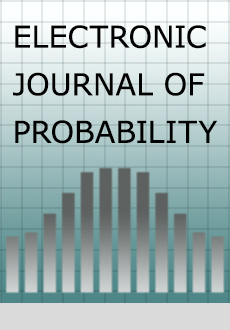Abstract
Consider a deck of n cards. Let $p_1,p_2,\ldots,p_n$ be a probability vector and consider the mixing time of the card shuffle which at each step of time picks a position according to the p<sub>i</sub> 's and move the card in that position to the top. This setup was introduced in [5], where a few special cases were studied. In particular the case $p_{n-k}=p_n=1/2$, $k=\Theta(n)$, turned out to be challenging and only a few lower bounds were produced. These were improved in [1] where it was shown that the relaxation time for the motion of a single card is $\Theta(n^2)$ when $k/n$ approaches a rational number. In this paper we give the first upper bounds. We focus on the case $m:=n-k=\lfloor n/2\rfloor$. It is shown that for the additive symmetrization as well as the lazy version of the shuffle, the mixing time is $O(n^3\log(n))$. We then consider two other modifications of the shuffle. The first one is the case $p_{n-k}=p_{n-k+1}=1/4$ and $p_n=1/2$. Using the entropy technique developed by Morris [7], we show that mixing time is $O(n^2\log^3(n))$ for the shuffle itself as well as for the symmetrization. The second modification is a variant of the first, where the moves are made in pairs so that if the first move involves position $n$ , then the second move must be taken from positions $m$ or $m+1$ and vice versa. Interestingly, this shuffle is much slower; the mixing time is at least of order $n^3\log(n)$ and at most of order $n^3\log^3(n))$. It is also observed that results of [1] can be modified to improve lower bounds for some $k=o(n)$.
Citation
Johan Jonasson. "Mixing Time Bounds for Overlapping Cycles Shuffles." Electron. J. Probab. 16 1281 - 1295, 2011. https://doi.org/10.1214/EJP.v16-912
Information





